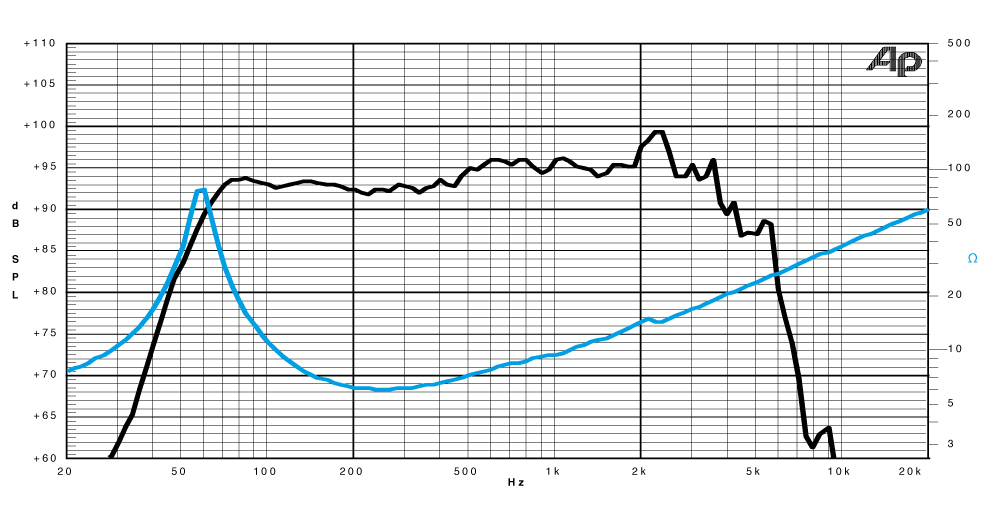I play 4-string, so low-E, though I might tune down a few semitones, slow low-C or D now and then, but shooting for low-E is OK.
I was looking at the Eminence BGH258 supertweeter for the 1k - 5k range, but am open to suggestions.
That's why I was thinking of a Crown XLS1002 amp. I can get them for about $280, which is pretty much what a TC Electronics or similar small head would cost. And the Crown has a DSP to flatten the sound and do a crossover between the woofer and a mid/tweeter.
I would suggest about 1.2 cubic feet net internal volume (or about 1.3 cubic feet inclusive of driver and port) for the 3012LF, tuned to the mid-40's ballpark. This "lower than theoretically optimum" tuning results in a tighter low end, so you can play the notes faster without the low end turning into a wall of mud. Also if your low end is too big you could end up "stepping on" the kickdrum.
I suggest a 3 diameter Precision Port, 6" long, so just the outer and inner flares and a coupling ring (no straight tube section). This will tune the box to about 45 Hz. Put the port on the back of the cabinet right smack behind the woofer's motor, so that airflow through the port helps with cooling, when the day comes that you have to push the cab pretty hard. You only need about an inch or so of clearance behind the motor thanks to the inner flare.
If you go this route with the port, you might want to toss a 3" diameter expandable plumber's test plug in your gig bag. If you ever have to play in a really boomy situation (like shoved into the corner at a wedding gig), you can plug the port and have a very tight-low-end sealed box. Something like this, showing one with port open and one with port plugged, and you can see the back of the motor through the upper port:
I have no specific opinion on the tweeter. I don't use that type of tweeter so I don't have experience with them, but obviously I like Eminence stuff for this application.
That 1.7 kHz peak in the 3012LF is desirable for electric bass if you want to "sit well in the mix" and be heard clearly. Let me explain: Guitar speakers typically have elevated response in the 2-4 kHz region, so THAT region belongs to THEM. If you are loud in that region, you risk instigating a volume war. BUT most guitar speakers have a dip in between 1 and 2 kHz, usually around 1.5 to 1.8 kHz. That dip is a WINDOW OF OPPORTUNITY for the bass to have a bit of growl without intruding on the guitar. Feel free to experiment with equalizing away the 3012LF's upper peak, you might prefer it that way, but don't automatically do so because you think "flat response" is desirable for a bass cab. Ime it is not, UNLESS you are amplifying upright bass OR performing solo.
Best of luck with your project.

